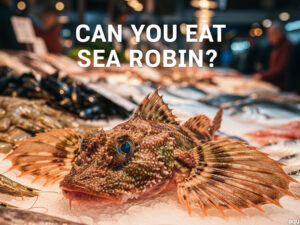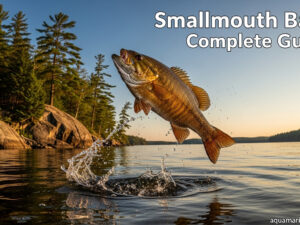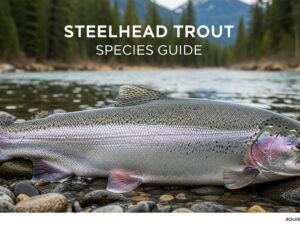The Strawberry Peacock Cichlid is a fish native to Lake Malawi in East Africa. This beauty is a freshwater fish. It is a part of the cichlid family. It has a bright red body with blue and yellow stripes on its fins.
The Strawberry Peacock is categorized as semi-aggressive but is primarily a peaceful fish that can be kept with other similar-sized peaceful cichlids. These are loved for their appearance and are famous among hobbyists and aquarists.
This guide will teach you everything you need to know about caring for Strawberry Peacock Cichlids so you can add them to your aquarium successfully. We will describe their behavior, diet, habitat, and tank mates. By the end of this guide, you will know everything there is to know about these beautiful fish!
Table of Contents
- Species Profile
- Strawberry Peacock Cichlid Care Guide
- Strawberry Peacock Cichlid Food & Diet
- Strawberry Peacock Cichlid Feeding Frequency
- Strawberry Peacock Cichlid Different Feeding Methods
- Strawberry Peacock Cichlid Tank Size
- Strawberry Peacock Cichlid Water Parameters
- Water Changes
- Cleaning The Tank
- Water Conditioners
- Lighting And Heating Requirements
- Filtration Requirements
- Substrate And Gravel
- Ammonia And Nitrates Level
- Protein Skimmer And Gravel Vacuum
- Water Test Kits
- Plants And Other Decorations
- Transportation And Handling
- Strawberry Peacock Cichlid Tank Mates
- Sexing The Strawberry Peacock Cichlid
- Color Morphs
- Poor Water Symptoms
- Common Health Problems
- Adding New Fish To Your Tank
- Frequent Mistakes To Avoid
- Advantages Of Having Strawberry Peacock Cichlid In Your Tank
- Disadvantages Of having Strawberry Peacock Cichlid In Your Tank
- Wrapping It Up
Species Profile
| Scientific name: | Aulonocara species hybrid |
| Common names: | Strawberry Peacock Cichlid, peacock cichlid, strawberry sunburst cichlid |
| Origin: | Lake Malawi in eastern Africa |
| Adult Size: | 4–7 inches |
| Ideal temperature: | 74°–82°F (23°–28°C) |
| Life expectancy: | 6–8 years |
| Color: | Bright pink, red, blue, yellow |
| Water Hardness: | 4-12 dKH |
| Temperament: | Semi-aggressive |
| Minimum tank size: | 40 gallons |
| Cost: | approximately 20$ |
| Diet: | Omnivore |
| pH: | 7.5–8.5 pH |
| Care Level: | Moderate |
| Breeding: | Egg-scatterer |
Strawberry Peacock Cichlids are genuinely fantastic fish. They are lovely, with an iridescent sheen on their body. They look stunning with their flowy spotted fins. They are soo popular because of their looks and their behavior.
They are easy to maintain and are also not fussy eaters. They are easy to breed and loved by very fun to watch while swimming. You might know how popular Strawberry Peacock Cichlids are based on their popularity in the pet trade. You should learn to pick your fish.
Your fish must be healthy and not become a cause of distress among other companions of your tank. A healthy Strawberry Peacock Cichlid has a well-rounded body, smooth and equal scales, clear eyes, and thick fins.
The color of the fish should be bright with a sheen on their bodies. You should always get your fish from a reputed dealer or pet store. This will help you avoid any unforeseen circumstances.
They can also be found in other nearby lakes and rivers. These include Lake Tanganyika and Lake Nyasa.
The aquarium trade has introduced the Strawberry Peacock Cichlid to different parts. They are trendy in countries like the United States, Canada, and Australia.
Also, checkJaguar Cichlids Care: Appearance, Lifespan
Strawberry Peacock Cichlid Appearance
The Strawberry Peacock Cichlid is a beautiful fish loved by many aquarists. It has a bright red body with blue and yellow stripes on its fins. The male is usually more brightly colored than the female. The female is typically a drabber color.
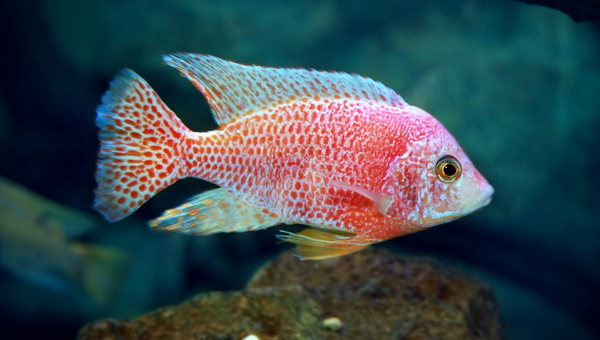
The body is shaped like an oval and has a forked tail. The fins are all rounded. The male usually has longer fins than the female. The body's scales are large and have a metallic sheen to them. The eyes and mouth are both small. The eyes are yellow with a black pupils. They change color when they are stressed and turn white.
Strawberry Peacock Cichlid Size & Growth Rate
The Strawberry Peacock Cichlid grows to be about 4-7 inches long. The female Strawberry Peacock Cichlids are smaller than males and are about 4 inches in length. The males can reach 6 inches long when they are fully adult.
The Strawberry Peacock Cichlid has a lifespan of 6-8 years. They take 2 to 3 years to reach their full size. So it would be best if you had your tank set up accordingly. Their lifespan depends on the care they get. Proper care and maintenance will lead to a better and fuller life.
You may also check Jewel Cichlid Care Guide: Appearance, Size, Diet & Al
Strawberry Peacock Cichlid Behavior and Temperament
The Strawberry Peacock Cichlid is a semi-aggressive fish. This means that they can be aggressive towards other fish, but they are not the most aggressive fish in the world. They are known to be peaceful with other fish similar in size. They are also good parents and will care for their fry.
The male Strawberry Peacock Cichlid can become competitive and eat smaller fish. They can be aggressive, but conflicts can be avoided with the proper male-to-female ratio. One male to four females works the best.
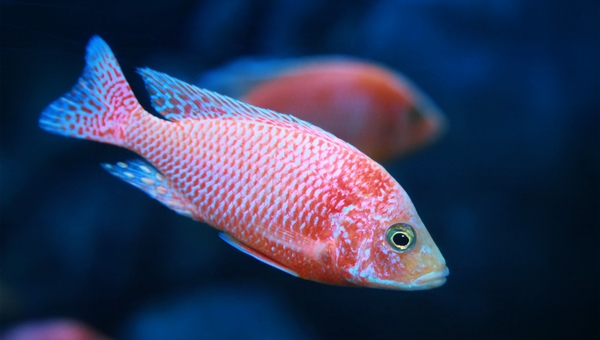
They may bite or nip other fish when they are showing off. More plants and other decorations should be added to reduce aggression so each fish can have its mini territories. And if this doesn't work, you should remove that aggressive fish from your tank to protect other fish.
They are more active during the day. Their behavior towards humans is usually peaceful if you do not bother them or their tank mates. They may become aggressive if they feel threatened or their fry is in danger.
Check How To Cure Fish Fungus (Aquarium Fish) Ultimate Treatment & Medication
Strawberry Peacock Cichlid Breeding
The Strawberry Peacock Cichlid is an egg-scatterer. This means the female will lay her eggs on a flat surface, and the male fertilizes them. The eggs will then hatch in about 3-5 days. The fry will be free-swimming after about 10 days.
You will need to have a male and a female to breed them. The tank should also have at least 55 gallons and plenty of hiding places. The water should also be clean and well-aerated. The temperature of the water should be between 74°-82°Fahrenheit.
You will need to do a water change of about 50% to get them to breed. This will trigger them to start breeding. The female will lay about 200-400 eggs.
The fry should be fed small live foods such as brine shrimp or micro worms. They can also be fed commercial fry foods. The fry will proliferate and be ready to be moved to a larger tank in about 2 months.
Strawberry Peacock Cichlid Care Guide
In this guide, we will cover the following topics:
Strawberry Peacock Cichlid Food & Diet
The Strawberry Peacock Cichlid are omnivores whose diet consists of meat and plants. This cichlid is an opportunistic eater, meaning it will eat whatever food is available. Their diet consists of small insects, crustaceans, and mollusks in the wild.
They also consume algae and plants. Finding food in the wild can be difficult, so they must eat whatever they can find.
The diet of a Strawberry Peacock Cichlid in captivity should mimic their diet in the wild as much as possible. They should have a varied diet that consists of both meat and plants.
A good diet for them includes:
- Cichlid pellets
- Frozen or live brine shrimp
- Bloodworms
- Mysis shrimp
- Krill
- Algae wafers
Giving them a varied diet is essential to help them stay healthy and provide the nutrients they need. You can also give them vegetables like zucchini, peas, and spinach.
Also, check Blood Parrot Cichlid Best Care Guide, Lifespan, Size & All
Strawberry Peacock Cichlid Feeding Frequency
The Strawberry Peacock Cichlid should be fed 2-3 times a day. They are not big eaters but need to eat small meals throughout the day. This will help them stay healthy and maintain their energy levels. You should not overfeed them because this can lead to health problems.

The amount of food they need will depend on their size and age. An adult fish would require more food than a juvenile fish. A general rule of thumb is to give them as much food as possible in 2 minutes.
Strawberry Peacock Cichlid Different Feeding Methods
There are many ways you can opt to feed your fish. You can choose the method that works best for you. Here are the methods described in detail that you can use to feed your fish:
- Hand-Feeding: This is the best way to bond with your fish. It's also an excellent way to train them to eat from your hand. You should only do this if your fish is comfortable with it. Some fish can be skittish and may not want to eat from your hand.
- Using a Feeding Ring: This is an excellent way to control your fish's food intake. It also helps to prevent overfeeding.
- Using a Pipette is an excellent way to target-feed your fish. This is especially helpful if you have a lot of fish and want to ensure each one gets enough to eat.
Strawberry Peacock Cichlid Tank Size
The Strawberry Peacock Cichlid needs a minimum tank size of 40 gallons. This is for a single fish. This is because they are active swimmers and need a lot of space to move around. They also like to hide, so you must provide plenty of hiding places.
You need to have a bigger tank to keep more than one fish. This will also avoid territorial aggression. If you wish to keep a school of these fish, you may need a tank holding at least 100 gallons of water.
Also, check Firemouth Cichlid 101: Diet, Size, Care Guide & All
Strawberry Peacock Cichlid Water Parameters
The Strawberry Peacock Cichlid is a freshwater fish. They are sensitive to changes in water parameters, so you need to ensure the water is clean and well-maintained. The temperature of the water should be between 74° to 82°Fahrenheit.
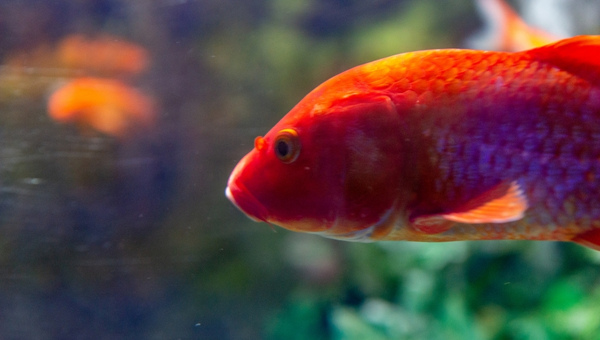
The pH level should be between 7.5 and 8.5, slightly alkaline. The water hardness required is between 4-12 dKH. You should try to maintain these parameters to keep your fish happy.
Water Changes
You should do a water change of at least 30% every week. This will help to keep the water clean and free of toxins. You will need to keep the water as clean as possible because these fish live in clean water in the wild and will not tolerate poor water quality. Poor water quality can stress them out, which is unsuitable for your fish.
Cleaning The Tank
You should clean the tank and all of the equipment regularly. This will help to prevent the build-up of toxins in the water. You should scrub the glass to remove any algae growth. To clean the tank, you need to:
- Empty the tank of all water
- Remove all rocks, plants, and decorations
- Wash the tank with a mild soap
- Rinse the tank thoroughly
- Fill the tank with clean water
- Add rocks, plants, and decorations back into the tank.
- Ensure no soap residue is left, as this can harm your fish.
Water Conditioners
Water conditioners are chemicals you add to the water to make it safe for your fish. Water conditioners are necessary for keeping fish because they help remove toxins from the water. They also help to adjust the pH level and hardness of the water.
Water conditioners are essential to keeping your fish healthy, so you should always use them when setting up a new tank or doing a water change. Many different types of water conditioners are available, and you should choose one that is right for your fish.
You may also check African Cichlid Care Guide: Diet, Tankmates, Lifespan & All
Lighting And Heating Requirements
The Strawberry Peacock Cichlid needs a heater to maintain the water temperature consistently. The heater should be placed in the tank to heat the water evenly. It is also good to have a thermometer to monitor the water temperature.
The Strawberry Peacock Cichlid needs light, but it does not need to be very bright. The light should be turned on for about 10 hours per day.
Filtration Requirements
The Strawberry Peacock Cichlid needs a filter to remove toxins and waste from the water. The filter should be cleaned every 4-6 weeks. Many different types of filters are available, and you should choose one that is right for your fish.
For Strawberry Peacock Cichlid, a filter with moderate current is the best. You can use a sponge filter. A sponge filter is a good choice because it will not create too much current in the tank.
Substrate And Gravel
The Strawberry Peacock Cichlid needs a safe substrate for them to eat. They like to dig, so you should choose a not-too-small substrate. You should not use gravel as it may destroy their gills. Tanks with a sand substrate should be used because they like to sift through the sand, looking for food. They also like to dig, so you must ensure that the plants in your tank are well anchored.
Ammonia And Nitrates Level
The levels of ammonia and nitrates in the water should be 0 ppm. Ammonia and nitrates can be very harmful to your fish and cause death. You should regularly test the ammonia and nitrates in the water to ensure they are not rising.
You may also check Peacock Cichlid 101: Facts, Characteristics & Care Guide
Protein Skimmer And Gravel Vacuum
A protein skimmer is a device that removes proteins and other organic matter from the water. A gravel vacuum is a device that sucks up debris from the substrate. These devices are unnecessary, but they can help keep the water clean and toxins-free.
They can be instrumental if you are busy and cannot clean your tank. Cleaning is time-consuming; you should use them as they will save you a lot of time.
Water Test Kits
Water test kits are essential because they help you monitor the levels of toxins in the water. They also help you adjust the pH level and hardness of the water. Many types of water test kits are available, and you should choose one that is right for your fish.
Plants And Other Decorations
The Strawberry Peacock Cichlid needs plants and other decorations in their tank. They like to hide, so you should provide them with plenty of hiding places. Plants also help to oxygenate the water and remove toxins from the water.
Many different types of plants are available, and you should choose ones that are safe for your fish. Some safe plants for your fish include Java fern, hornwort, and anacharis. You can also use live rocks and driftwood to create a naturalistic environment for your fish.
Also, check Otocinclus Catfish Care Guide: Appearance, Lifespan, Food & Diet, Breeding & All
Transportation And Handling
When transporting your fish, you should use a clean and well-aerated bag. You should not transport your fish in a dirty or unaerated bag as this can harm them. You should also avoid handling your fish too much, as this can stress them out.
You can use a net to move them from one tank to another. Gently lower the net into the water and allow the fish to swim. Once the fish is in the net, lift it out of the water and place it in the new tank. Be careful not to drop the fish, as this can injure them. You should be gentle when handling your fish, as they are delicate.
Strawberry Peacock Cichlid Tank Mates
The Strawberry Peacock Cichlid is semi-aggressive and should not be kept with other aggressive fish. They can be kept with other peacocks, Mbuna, and hap cichlids. They can also be kept with non-cichlid fish such as redtail sharks, Pleos, Placidochromis, Copadichromis, Rainbow sharks, Synodontis catfish, Nassachromis, and Sciaenochromis.
Shrimps and crabs should not be kept with Strawberry Peacock Cichlids as they can become meals for them.
Sexing The Strawberry Peacock Cichlid
The male and female Strawberry Peacock Cichlids look different. The male is usually larger than the female and has longer fins. The male also has brighter colors and patterns on their body. The female usually has a duller coloration, and their fins are not as long as the males.
Another way of telling the difference is by looking at their genital papilla. The genital papilla is a small tube-like structure located under the fish near its vent. The male's genital papilla is longer and thinner than the female's. The females are shorter and thicker.
Color Morphs
The Strawberry Peacock Cichlid has many color morphs. The most common color morph is the Strawberry Peacock Cichlid. This fish is bright pink, red, blue, and yellow. They are one of the most brightly colored fish in the world.
Other color morphs include the electric blue peacock, the powder blue peacock, the cobalt blue peacock, the sapphire blue peacock, the ruby red peacock, and the albino strawberry peacock.
Also, check Tomini Tang Fish Care Guide: Appearance, Breeding & All
Poor Water Symptoms
If the water quality in your tank is not good, the Strawberry Peacock Cichlid will start to show some poor water symptoms. These symptoms include listlessness, loss of appetite, and sluggishness.
The fish may also have discolored patches on their body. If you see any of these symptoms, you should do a water change and test the water quality.
Common Health Problems
The Strawberry Peacock Cichlid is a hardy fish, but some health problems can affect them. Some of these health problems include ich, velvet, and bacterial infections. These health problems are usually caused by poor water quality.
To prevent these health problems, you should do regular water changes and test the water quality. Some more common diseases are:
- Malawi bloat: This disease affects cichlids from Lake Malawi. It is caused by a bacteria called Aeromonas hydrophila. The symptoms of this disease include bloating, loss of appetite, and lethargy. You should take the fish to a vet if you see any of these symptoms. To treat Malawi bloat, switch 40% of the water and feed your fish food with Metronidazole, or add 50 mg of Metronidazole per gallon of water.
- Swim bladder disease: This disease affects the swim bladder. The swim bladder is a sac-like organ that helps the fish to float. If this disease is not treated, it can be fatal. The symptoms of this disease include floating at the surface, swimming upside down, and difficulty swimming. To treat swim bladder disease, you should feed your fish food high in fat and protein. You can also add 50 mg of Metronidazole per gallon of water.
- Tuberculosis: This is a disease caused by Mycobacterium tuberculosis. The symptoms of this disease include weight loss, loss of appetite, and lethargy. You should take the fish to a vet if you see any of these symptoms.
If you see any symptoms of illness in your fish, you should take them to a vet. A vet will be able to diagnose and treat the illness properly. You should not try to treat your fish on your own if you are unsure. You must not give any wrong medications alone as this can harm your fish.
Adding New Fish To Your Tank
When adding new fish to your tank, you should always quarantine them first. New fish can bring diseases and parasites that can harm your existing fish. To quarantine your fish, you should set up a separate tank and test the water quality. You should also observe the fish for any signs of illness. Only add the fish to your main tank if they are healthy.
Frequent Mistakes To Avoid
One of the most common mistakes when keeping Strawberry Peacock Cichlids is not having a big enough tank. These fish need at least a 40-gallon tank. They also need plenty of hiding places and lots of plants.
Another mistake does not have the correct water parameters. The water should be clean and well-aerated with a pH of 7.5-8.5 and 74° to 82°Fahrenheit.
Advantages Of Having Strawberry Peacock Cichlid In Your Tank
There are many advantages of having a Strawberry Peacock Cichlid.
Some of these advantages are:
- The Strawberry Peacock Cichlid is a beautiful fish that can add color and life to your tank.
- They are active and playful.
- You do not need a lid for your Strawberry Peacock Cichlid tank, as they don't jump out of the tank.
- They are also relatively easy to care for if you have the correct setup.
- These fish are also peaceful towards other fish and make a great addition to any community tank.
Disadvantages Of having Strawberry Peacock Cichlid In Your Tank
There are also some disadvantages of having Strawberry Peacock Cichlid.
Some of these disadvantages are:
- They can be aggressive towards other fish, especially if they are not the same size.
- Strawberry Peacock Cichlids must also be in a group of at least 6 fish. They can become stressed if not in a group, leading to health problems.
- They also need a hiding place in their tank as they are shy fish.
Wrapping It Up
In conclusion, the Strawberry Peacock Cichlid is a beautiful and active fish that can make a great addition to any community tank. They are relatively easy to care for and suitable for beginners and experienced fish keepers. They can become your favorite pet if you take good care of them.
You should be aware of their needs and also know when your fish is stressed and when they are calm. We hope that you research before getting a Strawberry Peacock Cichlid and provide them with everything they need to be happy and healthy.
You should know them better to understand their requirements based on their behavior. We also hope that this article has helped you understand these fish better. We wish you all the best, and thank you so much for reading!

